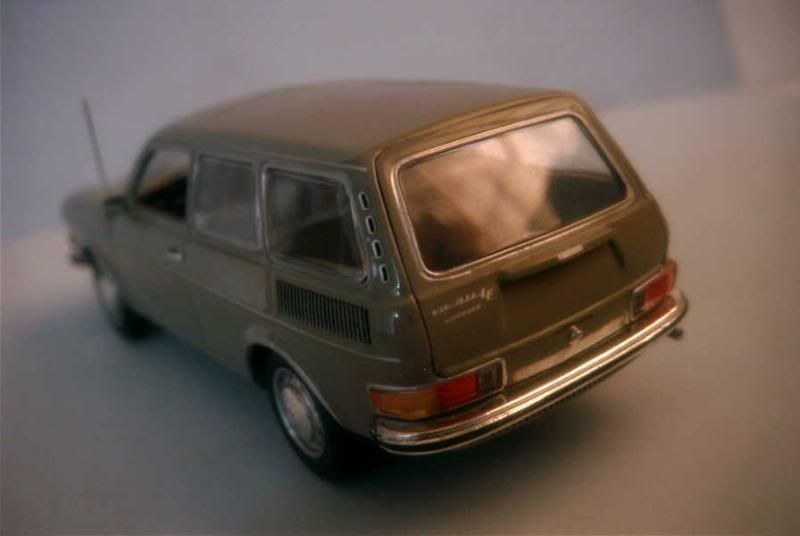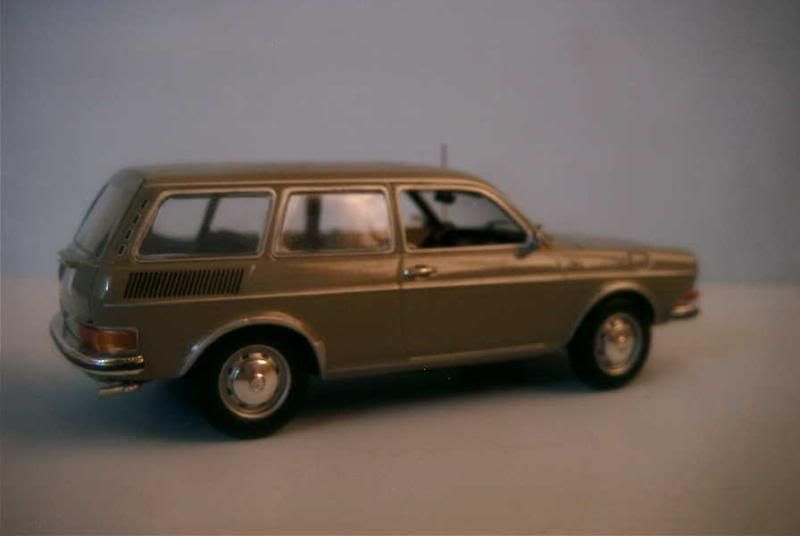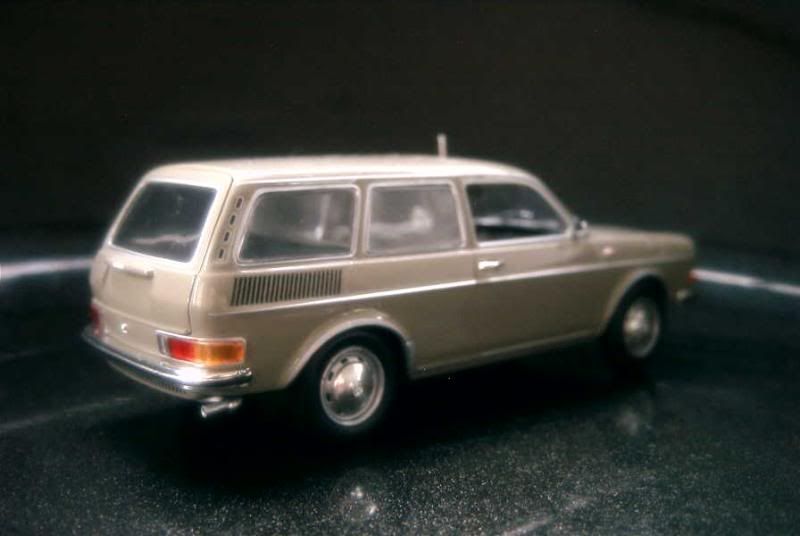A little history
After the Typ 3, Volkswagen continued to expand its range upward by offering in 1968 what was then its largest car ever – the Typ 4, known from the public as the 411 model.
Despite its higher ambitions, the 411 remained unmistakably linked to the original Beetle. From the outside, it basically looked as an overgrown Typ 3, retaining the traditional air-cooled, rear-engine, rear-wheel-drive arrangement. Some discrete but significant innovations were introduced though, most notably unibody construction and an efficient suspension through MacPherson struts. More apparent to the public, the 411 would also be Volkswagen’s first four-door vehicle.
The 411 was introduced during the Paris motor show of October 1968. Even though the car was rather elegant with its Pininfarina-inspired body, well equipped for its time and fitted with a brilliant 1.7-litre boxer engine – that would later be installed in the VW-Porsche 914 –, it certainly came too late, with the popularity of rear-engine automobiles rapidly vanishing. Cars, particularly in the 411’s class, now were to be water-cooled, front-engined, and preferably driven through the front wheels – it seemed Volkswagen had it all wrong.
Volkswagen’s reaction was to offer a more conventional alternative to its 411. It appeared in 1970 as the K70, designed by NSU and hastily rebadged after the little company’s takeover. In turn, the K70 itself was a relative failure, and both cars cohabited while Volkswagen’s engineers were working on a common successor. In the meantime, the 411 gave way to a modernized 412, which was tastefully modified by American stylist Brooks Stevens and was introduced for model year 1973. One year later, the engine was enlarged to 1.8 litre, though it lost its Bosch fuel injection system in the process. Simultaneously its replacement saw light: it was the modern Passat. The 412 was removed from the company’s 1975 range, while the K70 followed the same way a few months later.
Despite their dated concept and a disastrous tendency to rust, the 411 / 412s proved to be excellent vehicles, but also marked the end of an era, being the very last cars introduced by Volkswagen that used the traditional Beetle-like arrangement. The Wolfsburg factory saw almost 370,000 of them being built through their short six-year career, many of them exported to the North American market.
About the model
Model: Volkswagen 411 LE Variant
Year: 1969
Maker: Minichamps
Scale: 1/43
Distributed by: Minichamps
Acquired: brand new, in February 2006, in Manila, Philippines
For the die-cast of a Sixties German car, there is perhaps no better choice than Minichamps. The famed manufacturer offers, among others, this fine reproduction of the two-door estate version of the 411 (there were no four-door estate). My rating is 14/20.





After the Typ 3, Volkswagen continued to expand its range upward by offering in 1968 what was then its largest car ever – the Typ 4, known from the public as the 411 model.
Despite its higher ambitions, the 411 remained unmistakably linked to the original Beetle. From the outside, it basically looked as an overgrown Typ 3, retaining the traditional air-cooled, rear-engine, rear-wheel-drive arrangement. Some discrete but significant innovations were introduced though, most notably unibody construction and an efficient suspension through MacPherson struts. More apparent to the public, the 411 would also be Volkswagen’s first four-door vehicle.
The 411 was introduced during the Paris motor show of October 1968. Even though the car was rather elegant with its Pininfarina-inspired body, well equipped for its time and fitted with a brilliant 1.7-litre boxer engine – that would later be installed in the VW-Porsche 914 –, it certainly came too late, with the popularity of rear-engine automobiles rapidly vanishing. Cars, particularly in the 411’s class, now were to be water-cooled, front-engined, and preferably driven through the front wheels – it seemed Volkswagen had it all wrong.
Volkswagen’s reaction was to offer a more conventional alternative to its 411. It appeared in 1970 as the K70, designed by NSU and hastily rebadged after the little company’s takeover. In turn, the K70 itself was a relative failure, and both cars cohabited while Volkswagen’s engineers were working on a common successor. In the meantime, the 411 gave way to a modernized 412, which was tastefully modified by American stylist Brooks Stevens and was introduced for model year 1973. One year later, the engine was enlarged to 1.8 litre, though it lost its Bosch fuel injection system in the process. Simultaneously its replacement saw light: it was the modern Passat. The 412 was removed from the company’s 1975 range, while the K70 followed the same way a few months later.
Despite their dated concept and a disastrous tendency to rust, the 411 / 412s proved to be excellent vehicles, but also marked the end of an era, being the very last cars introduced by Volkswagen that used the traditional Beetle-like arrangement. The Wolfsburg factory saw almost 370,000 of them being built through their short six-year career, many of them exported to the North American market.
About the model
Model: Volkswagen 411 LE Variant
Year: 1969
Maker: Minichamps
Scale: 1/43
Distributed by: Minichamps
Acquired: brand new, in February 2006, in Manila, Philippines
For the die-cast of a Sixties German car, there is perhaps no better choice than Minichamps. The famed manufacturer offers, among others, this fine reproduction of the two-door estate version of the 411 (there were no four-door estate). My rating is 14/20.








2 comments:
Enjoyed this VW feature :-)
Glad you liked Komenda, and equally happy to see you posting here again. Somehow I imagined that a post about a Volkswagen would bring reactions from the Philippines hahaha! ;)
Post a Comment